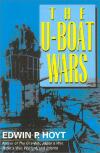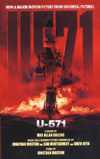HMAS Sydney
Loss and Controversy
Frame, T.R.
1993, Hodder & Stoughton, Sydney
ISBN 0340584688
300 pages, photos, maps
| Type. | General History |
| Pros. | Narrative & analytical, laid to rest conspiracies and only deals with actual evidence. Gives a solid, revealing view of the times, men, ships, and events. |
| Cons. | Limited only to official and most conservative evidence. Resolves little, merely giving in one volume all the relevant evidence and supported theories presented elsewhere. Too timid and factual. |
| Rating. |  |
Tom Frame's HMAS Sydney: Loss & Controversy is in essence a disappointment. This book is solid, very well researched and written, sensitive to the tragedy and the feelings of relatives. It shies from judgement, but also shies from speculation, even of the most informed kind. As a professional naval historian, Frame feels he has no business taking his audience away from the pure facts, enabling others to build new conspiracies on his speculations. Nor does he desire to illustrate for his audience, including elderly relatives, what happened and how it felt, aboard HMAS Sydney on that fatal afternoon. He confines himself to dismissing the most prominent conspiracy theories by only elucidating what the sources do say, and narrating an overall analytical account very much in the traditions of official and academic naval history. As a result, this restrained and limited account still leaves many questions unanswered, many conspiracy theories not dismissed (and thus not disarmed) and much still unseen. It feels incomplete to read. Much of the 'grit' of the story is not here.
It is obvious conspiracy theorists will never be satisfied with the official explanations for the loss of HMAS Sydney and the German Hilfskreuzer (auxiliary commerce raider) Kormoran off the West Australian coast on 19 November 1941. It remains today, like other major disasters in Australian and world maritime history, a topical, controversial and traumatic event. Unlike many disasters, the level of grief and pain has been sharpened by the passage of time and the lack of new, revealing, information. The lack of information has encouraged conspiracy theorists. Official silence and insensitivity at the time, immediately after the war, and until recently have exacerbated the pain and doubt. The old policy of 'allowing' people to forget and not be grieved has been shown to be totally flawed and ineffective.
Both Frame and Olson have separately managed to destroy any real conspiracy theories. They have produced firm and reasonable explanations for how the Australian light cruiser got too close to Kormoran, how they crippled and sank each other, and why no-one thought to look for them until days later, by which time any few Sydney survivors were dead. The same happened in other theatres, in other periods, the most horrific being the loss of USS Indianapolis within a few days of VJ day in August 1945. This book, then, is not intended to convince the hard-baked or the zealot. Frame is deliberately treading carefully to spare the relatives as much pain as possible.
One of Frame's objectives is to clear Captain Joseph Burnett RAN of any blame (as against responsibility) for the loss of his ship and crew. Frame presents more than enough evidence to show Burnett was neither incompetent, inexperienced, acting strangely, or merely lax over the vessel he intercepted. Burnett may have been the victim of a deliberate ploy of the German captain Detmers, but Burnett did not unduly risk his ship. If there is anything still concealed about the interception, it is that Detmers may have pretended to surrender and then fired at point-blank range. It will not be proven without the kind of admission we have never yet received. Whether this, during a total war, is illegal or immoral is itself a subject for heated debate. With Kormoran almost as well armed as Sydney, the lethal range of her guns was much greater than that required to closely investigate a suspicious merchantman. Kormoran had a duty to sink - perhaps by any means - a threat to other raiders. Sydney was in danger of receiving the kind of knockout hits on guns, directors and bridge she suffered, at six or seven miles, not just one mile. All there may be to hide is a somewhat cruel deception. The silence of Kormoran survivors is rather due to the adverse publicity conspiracy theories receive.
Another of Frame's objectives is to balance all the existing primary and secondary sources. He presents all the available primary evidence. He also describes the gist of earlier secondary works. Here Frame is at his most interesting, outlining both the flawed Official accounts of the 1950s, and their relationship to public and private history. The famous works of more recent years are also compared. These include the German-centred account of Barbara Winter, which did much to balance the stories and the field of research with newer and overlooked German materials. The controversial work of the most prominent conspiracist, Michael Maloney, is also described.
Frame states credibly that no surviving relevant evidence remains concealed from the Australian public or international observers. There may have been classified or secret evidence still concealed at the end of the Second World War. Given the commencement of the Cold War and the absolute secrecy of Ultra and other cryptological activities, this would not be surprising. Some of that evidence (which might have proved no radio calls from Sydney were sent, or that they were jammed by Kormoran) may have been destroyed accidentally or by chance decades ago. They might have been regarded as being as of no relevance, as it was a wartime tragedy best forgotten. There would be no real reason for concealment today. It is very difficult to see why anyone would still withhold anything. The only possible cause would be a desire to conceal incompetence or intransigence of earlier generations of Navy filing and public relations personnel, or historians. There is nothing in British, German, or Japanese archives to suggest anyone is hiding anything any longer. But concealed or destroyed mundane files from fifty years ago can seem suspicious now.
There are still elements left unexplored, though they are of limited relevance. One not dealt with by Frame is the reports of coastal residents at the time and since of hearing gunfire and explosions much further south and closer to shore than any of the German or Australian official sources can demonstrate. While many of these may be fraudulent, mistakes, blurred memories, or events explicable by other causes, the fact that Frame did not investigate them still gives such theories relevance. If they are not used by the few surviving relatives or coastal residents, then mangled or recycled versions of these ideas and memories can be used by theorists with more nefarious purposes. Frame cannot perhaps be blamed for not countering all such accounts, nor exploring every media report or possibility. He could however have at least explicitly given his professional opinion rather than merely dismissing them implicitly along with all the wilder ideas of amateurs, conspiracists and others. The book is solidly printed and bound. It contains excellent maps, diagrammes, charts, tables, and photographs, as well as several important pieces of speculatory artwork, used only as cover illustrations. Frame has nevertheless produced a solid but overly cautious work of great value.
The reviewer welcomes your comments on this review.
Review written by Ian Campbell.
Published on 18 Jun 2001.
This title is highly recommended.
Purchase information: (info) Get HMAS Sydney now at amazon.co.uk
Get HMAS Sydney now at amazon.co.uk
Return to our main review page.



